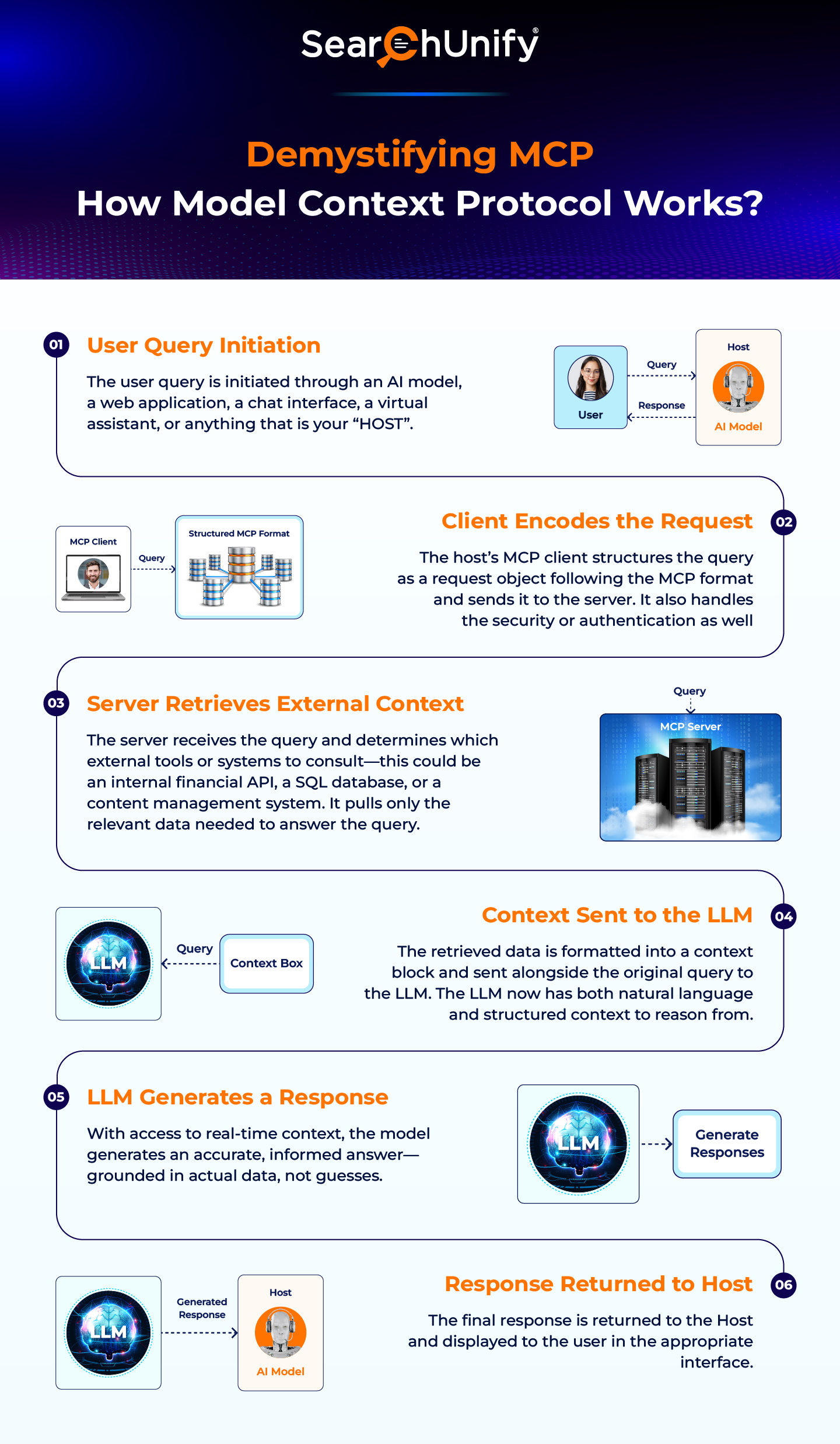MCP is a standard protocol for any API to extract the information and provide context to the LLMs using a defined set of rules. The introduction of MCP has sorted the fragmented mess that comes along with multiple integrations to connect with external data sources.
MCP has the following components:
- Host with client: Host is an application that initiates query; it can be a web application, chat interface, and so on. Client, on the other hand, is an interface layer present inside the host application, which is responsible for one-on-one connection with the MCP server.
- MCP server: MCP servers are connected with multiple data sources through the MCP standard and are responsible for providing the information and structured data for the tasks execution.
Now, let’s understand how the Model Context Protocol works.
To view this infographic in high resolution, click here.

Conclusion
Model context protocol brings structure, security, and scalability to AI-powered interactions. It has standardized how LLMs access the external data and has ensured real-time and contextual information flows to AI model from any source.
The above infographic provides clarity on the working of the MCP and how it is providing context to the Large language models.
What next?
Implementing a solution that offers MCP integration making it easier for your business to harness the full potential of LLMs. SearchUnify is one such solution, backed by a governance layer, the MCP integration also ensures enterprise-grade security, compliance, and explainability, making it future-ready for the evolving demands of enterprise AI.







